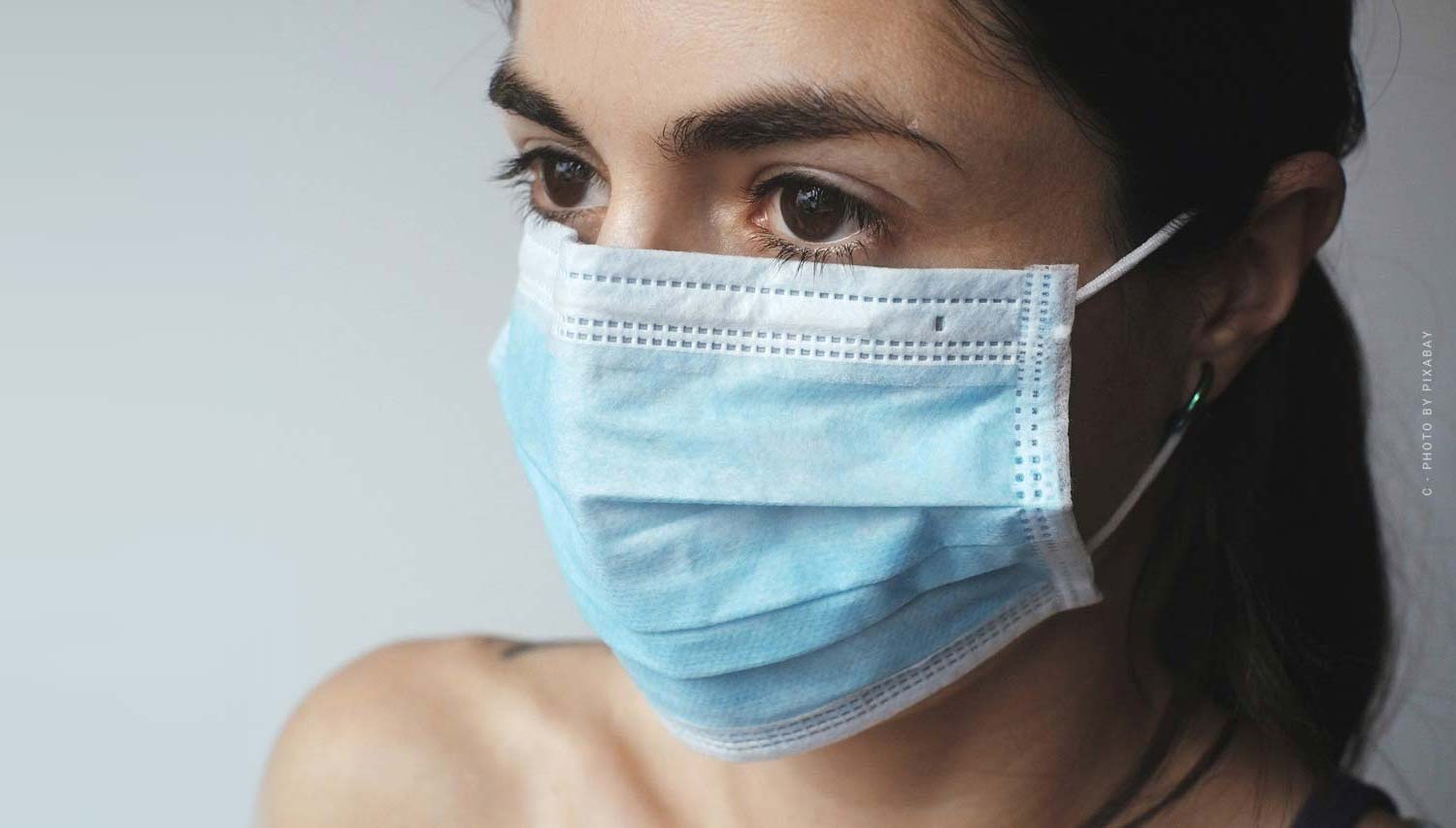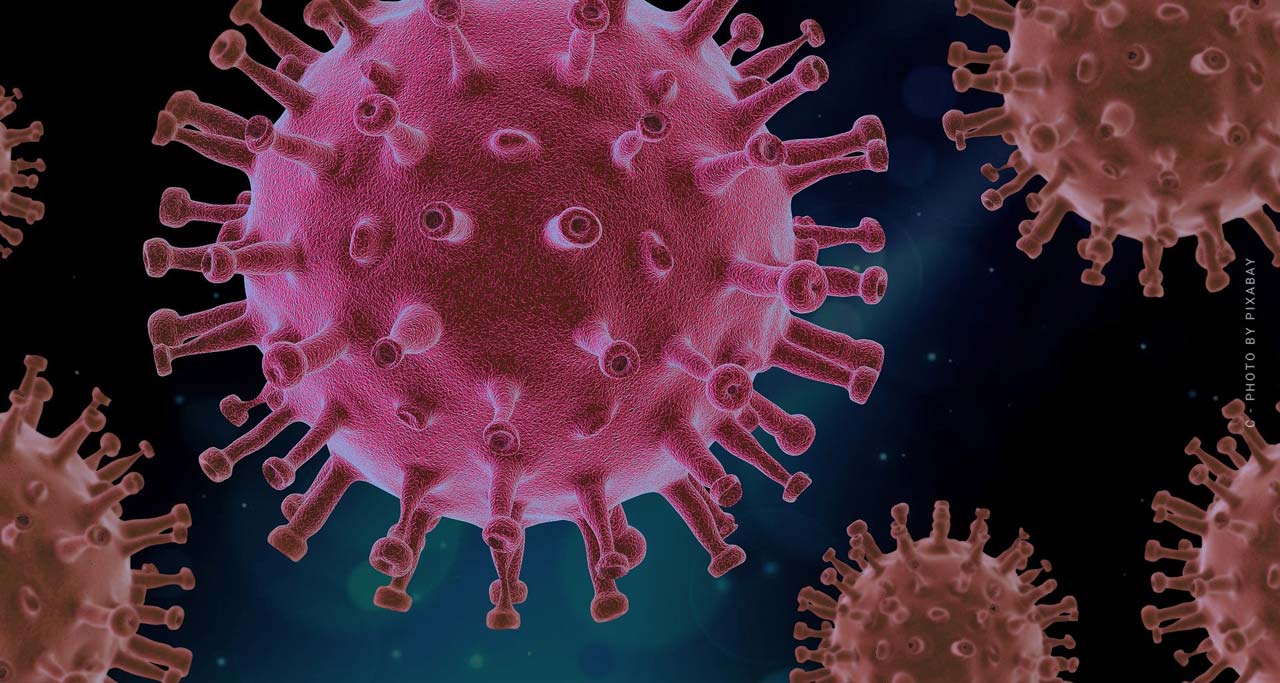COVID-19 explains: coronavirus, symptoms, curfew + free certificate for the way to work
COVID-19, the so-called “coronavirus” is and remains the central topic of the world. All news channels talk only about this pandemic, the novel coronavirus or “COVID-19”. In many countries there are curfews, now also in Germany. For many companies and employers, processes can be reorganized to home office activities, but not for everyone. Here we have the most important in brief. The aim now is to “flatten the curve”, but what does that mean? What does the curfew mean? Are there exceptions to the curfew? Where can I download a free employer’s certificate for the way to work?
Prohibitions – curfew light summarized
German Chancellor Angela Merkel has just appeared before the cameras of the capital’s press. She announced tightened measures to contain the infections with COVID-19.
- People are only allowed to stay outside alone for walks, sports, etc.
Exceptions are 2 persons or persons from one household - Meetings with more than 2 persons are prohibited and currently even punishable by law, in public and private spaces
- There are exceptions such as the way to the supermarket, pharmacy or even the way to work.
What is the corona virus (COVID-19)?
The World Health Organization (WHO) has declared COVID-19 a pandemic. The coronavirus is the most recent pandemic, which means that the whole world is affected. It is reaching a level not seen for decades. The virus affects billions of people and disrupts social and economic life worldwide. The COVID-19 or coronavirus, which was first decreed in the Chinese province of Wuhan, has now spread to more than 150 countries, and the number of people infected is increasing daily.
COVID-19 stands for Coronavirus Disease 2019, or “corona virus disease”. The virus causes severe and acute respiratory syndrome in some infected people.
Why is it so important to contain the virus?
Health systems are set up for many emergencies, but not for such exceptional situations. In Germany, for example, there are 25,000 ventilators. As a rule, these are 80% full. This means that theoretically only 5,000 devices remain for treatment.
COVID-19 causes, among other things, that in some cases the lungs get stuck together, so it is important to ventilate patients. The more patients need this inpatient treatment, the higher the workload and the risk that the devices are not sufficient.
If this is the case, as for example in Northern Italy, doctors have to decide who gets treatment and who does not. By making this choice, individual people must be turned away, especially those who are less likely to be cured. Nobody wants to have to make that decision.
In order to keep the infection curve low and thus reduce the risk of hospital overload, the current curfews are in place.
In 2 out of 3 infected people the coronavirus breaks out
As insidious at the virus, even if the virus is noticed in the course, the outbreak takes 7 days from ingestion to impact in the body. This means that a full 7 days after infection, no transmitter knows it is already infected. Even worse, while some infected people are hit extremely hard, many other infected people do not notice any noticeable effects. As a result, they do not know that they are actually carriers.
Through these measures, public health authorities and the entire national health infrastructure worldwide are gaining valuable time to respond to this crisis.
Tips: How can you help?
You can help most by adapting your own behaviour:
- You should stay at home as often as possible. This means above all restricting personal meetings with older or chronically ill people – for their protection
- Refrain from shaking hands and hugging
- Hold distance to others
The 3 dangers of COVID-19
- Hazard minimization of hospital overload (lowering of the infection curve)
- Until the virus breaks out in the body, it takes 7 days. During these 7 days, one does not even know anything about the infection that has already occurred
- A large proportion of those infected do not show signs of the virus even after 7 days, so they remain carriers without knowing it.
Exceptions during curfew
The acting authority may attach exceptions to its orders, which in turn must be as specific as possible. The first general ruling of the district of Tirschenreuth in Germany expressly provides for the following exceptions, among others
- Travel to and from the respective place of work with employer’s certificate
- Shopping for the needs of daily life within the urban area
- Visits to doctors’ surgeries, medical supply stores, opticians, hearing aid acousticians and health practices
- Visits to pharmacies within the affected urban area
- Visits to Deutsche Post branches
- Filling up at petrol stations
- Fire and rescue services on the way to the base or site
- Necessary delivery traffic
Certificate for the way to work: Free for employers – Download
You urgently need a document for your employees? Here you can quickly and easily download a completed form:
- Certificate for the way to work – Download as DOCX
- Certificate for the way to work – Download as ODT
- Certificate for the way to work – Download as PDF
COVID-19 – what is it? The virus in detail
After the most important information we have here many more important information about the coronavirus and its course. Are all coronaviruses dangerous for humans? Are there comparable examples to COVID-19? We have the answers.
Are all corona viruses dangerous for humans?
Coronaviruses belong to the large family of viruses. Viruses are part of normal life. Viruses are widespread in humans and many different animal species, including cats and bats. The common human corona virus, as described above, typically causes an upper respiratory infection, such as a cold. Many infected people often do not even notice that they are already affected by the virus.
In fact, most people become infected with one or more of these viruses at some point in their lives. Infection with the human corona virus usually resolves itself, while others feel extremely uncomfortable, up to really severe illness. Elderly people and people with previous illnesses are particularly at risk.
Rarely can coronaviruses that infect animals develop into a new human coronavirus.
COVID-19 – What is the difference to influenza?
The number of new infections with influenza is rising again for seasonal reasons. According to the RKI (as of 17.03.2020), over 145,000 people in Germany have contracted influenza since last autumn. 247 died of it. In the 2017/18 flu season 25,100 people died. According to the RKI, this is the highest number in 30 years.
According to current data from the Johns Hopkins University of 19 March 2020, 12,327 people in Germany are infected with Sars-CoV-2. 28 people have died as a result so far. Worldwide, 218,815 people are known to be infected and 8,810 deaths due to COVID-19.
Are there comparable examples to COVID-19?
Examples from the recent past were the severe respiratory syndrome “SARS” in 2003 and the respiratory syndrome known as “MERS” Coronavirus 2012 in the Middle East.
The outbreak of coronavirus began in China, more precisely in Wuhan.
Where is Wuhan, China?
The outbreak of coronavirus began in Wuhan (China). The virus spread rapidly worldwide. On 11 March, the WHO (World Trade Organization) finally declared COVID-19 a pandemic. 2 out of 3 people infected with the virus suffer an outbreak.
What is CFR (mortality)?
In China, the total CFR was very high in the initial phase of the outbreak.
CFR stands for “case fatality rate”. It describes the “lethality” of a disease. More precisely, it describes the disease or poisoning or the probability of dying from a disease. The CFR thus calculates the ratio of deaths to the number of people who are ill or poisoned.
This is particularly due to the fact that no comparisons were available and there was no lead time. Initially the CFR was 17.3%, which means that on average 1 in 6 people died. The CFR was reduced to 7% by 1 February thanks to better equipment, tests, precautions and a general improvement in treatment standards.
This means that with proper control, the condition can be stabilized.
Which people are most at risk?
In particular, there are two groups of people who are at risk:
- Older people over 60 years of age
- People with previous illnesses
The virus is dangerous in different ways for different age groups. For example, the mortality rate among people under 60 is relatively low. On the other hand, the mortality rate among older people is increasing rapidly. So the highest risk is borne by people over 60 years of age. Besides this group of people, people with pre-existing conditions are particularly at risk. Persons with high blood pressure, diabetes, cardiovascular diseases, chronic respiratory diseases and cancer are much more at risk than healthy persons. It becomes dangerous when both factors come together, old age and previous illnesses. Unfortunately, the group of older people suffers more frequently from one or more diseases. This makes the situation so personal, even for each individual: Your own grandmother, your own grandfather, your parents.
Tips for washing hands
To minimize the risk of passing the virus on, make sure you wash your hands. As simple as it sounds, it’s very effective. Thorough hand washing is a five-step process:
- Hold your hands under running water
- Soap your hands thoroughly
- Thorough hand washing takes 20 to 30 seconds
- Watch out: palms, backs of hands, fingertips, finger gaps and thumbs as well as fingernails, which are forgotten by most people
- Rinse hands under running water
- Dry off carefully













